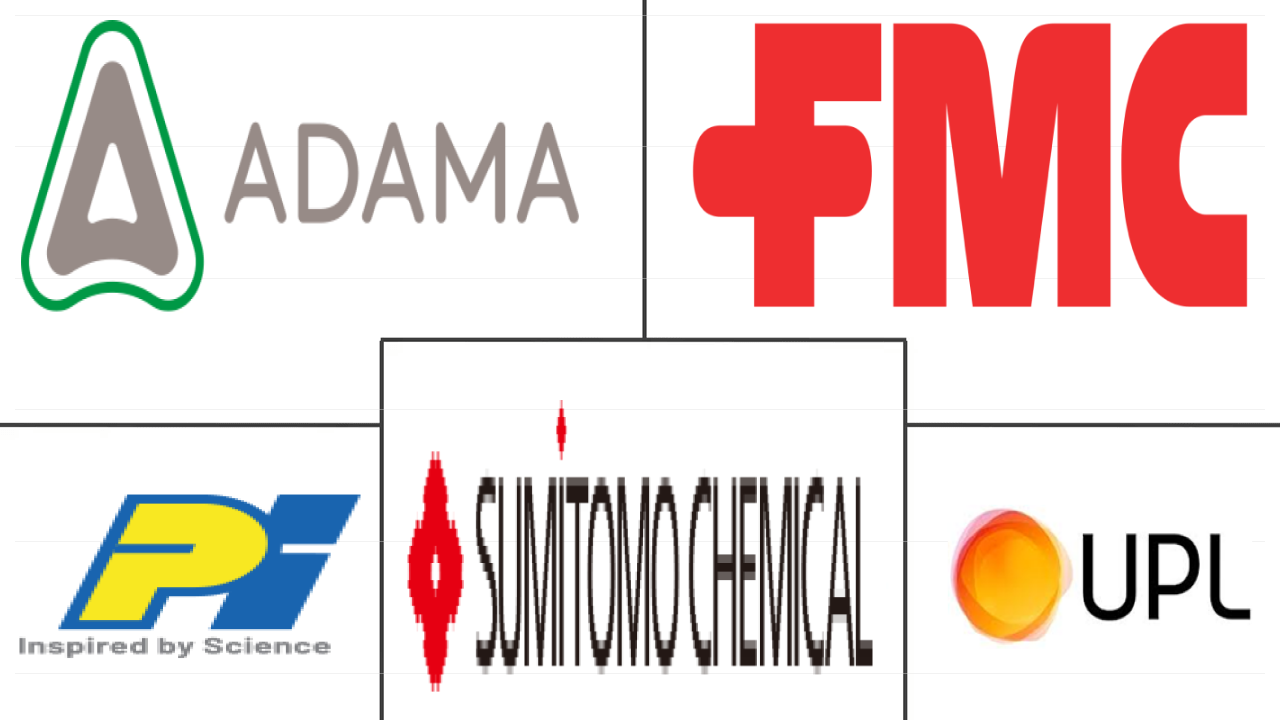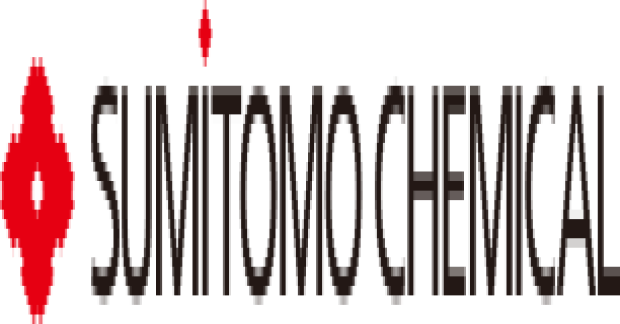Market Size of india insecticide Industry
| Icons | Lable | Value |
|---|---|---|
|
|
Study Period | 2017 - 2029 |
|
|
Market Size (2024) | USD 1.78 Billion |
|
|
Market Size (2029) | USD 2.15 Billion |
|
|
Largest Share by Application Mode | Foliar |
|
|
CAGR (2024 - 2029) | 3.91 % |
|
|
Fastest Growing by Application Mode | Seed Treatment |
|
|
Market Concentration | Low |
Major Players |
||

|
||
|
*Disclaimer: Major Players sorted in no particular order |
India Insecticide Market Analysis
The India Insecticide Market size is estimated at 1.78 billion USD in 2024, and is expected to reach 2.15 billion USD by 2029, growing at a CAGR of 3.91% during the forecast period (2024-2029).
1.78 Billion
Market Size in 2024 (USD)
2.15 Billion
Market Size in 2029 (USD)
3.24 %
CAGR (2017-2023)
3.91 %
CAGR (2024-2029)
Largest Segment by Application Mode
57.61 %
value share, Foliar, 2023
Foliar mode effectively controls insects, aphids, pink borers, armyworms, rice weevils, beetles, rice moths, and other insect pests in various crops, growing the market for foliar.
Largest Segment by Crop Type
44.66 %
value share, Grains & Cereals, 2023
These crops are vulnerable to various insect pests such as stem borers, leaf folders, and weevils, causing severe economic loss and necessitating insecticide application.
Fastest-Growing Segment by Crop Type
4.12 %
Projected CAGR, Commercial Crops, 2024-2029
Commercial crops are economically important, and insecticides protect against pests such as aphids, borers, and other insects, ensuring higher yields and profitability.
Leading Market Player 1
14.97 %
market share, FMC Corporation, 2022

FMC Corp concentrates on its market growth with the expanding product portfolio by adding new products like Talstar Plus and Corprima to provide effective solutions.
Leading Market Player 2
8.87 %
market share, Sumitomo Chemical Co. Ltd, 2022

Sumitomo Chemicals invests more in extending its product portfolio by adding new innovative insecticide products for various crop types, resulting in growing its market share.
The foliar application mode is a common and effective way of applying insecticides for preventive and curative methods
- In India, insecticides are applied through various modes to control insects in agricultural practices. Farmers can achieve cost savings by choosing a suitable application method covering specific areas and minimizing wastage. This increased efficiency leads to optimized insecticide usage and reduced input costs for farmers.
- The dominant mode of insecticide application in agricultural practices is foliar application, which accounted for 57.5% of the insecticide application segment in 2022. This method is predominantly used in grains and cereals cultivation, which holds the largest market share at 44.6%. The popularity of foliar treatment insecticides can be attributed to their rapid effectiveness in controlling insect infestations, making them crucial for efficient pest management.
- Seed treatment is the second most prevalent application method, accounting for a market share of 16.9% in the segment. This is primarily because farmers have acknowledged the significance of safeguarding seeds and seedlings from insect pests to ensure optimal crop establishment, maximize yield, and reduce insecticide usage in future growth stages.
- From 2019 to 2021, the application mode market demonstrated a projected increase with a CAGR of 2.2%. Farmers' preference for a specific application mode depends on the target insect, crop type, insect stage, and equipment availability. The growing global population and the resulting higher demand for food have led to a necessity to enhance agricultural productivity. As a result, the application mode segment is expected to witness a CAGR of 3.8% during the forecast period.
India Insecticide Industry Segmentation
Chemigation, Foliar, Fumigation, Seed Treatment, Soil Treatment are covered as segments by Application Mode. Commercial Crops, Fruits & Vegetables, Grains & Cereals, Pulses & Oilseeds, Turf & Ornamental are covered as segments by Crop Type.
- In India, insecticides are applied through various modes to control insects in agricultural practices. Farmers can achieve cost savings by choosing a suitable application method covering specific areas and minimizing wastage. This increased efficiency leads to optimized insecticide usage and reduced input costs for farmers.
- The dominant mode of insecticide application in agricultural practices is foliar application, which accounted for 57.5% of the insecticide application segment in 2022. This method is predominantly used in grains and cereals cultivation, which holds the largest market share at 44.6%. The popularity of foliar treatment insecticides can be attributed to their rapid effectiveness in controlling insect infestations, making them crucial for efficient pest management.
- Seed treatment is the second most prevalent application method, accounting for a market share of 16.9% in the segment. This is primarily because farmers have acknowledged the significance of safeguarding seeds and seedlings from insect pests to ensure optimal crop establishment, maximize yield, and reduce insecticide usage in future growth stages.
- From 2019 to 2021, the application mode market demonstrated a projected increase with a CAGR of 2.2%. Farmers' preference for a specific application mode depends on the target insect, crop type, insect stage, and equipment availability. The growing global population and the resulting higher demand for food have led to a necessity to enhance agricultural productivity. As a result, the application mode segment is expected to witness a CAGR of 3.8% during the forecast period.
| Application Mode | |
| Chemigation | |
| Foliar | |
| Fumigation | |
| Seed Treatment | |
| Soil Treatment |
| Crop Type | |
| Commercial Crops | |
| Fruits & Vegetables | |
| Grains & Cereals | |
| Pulses & Oilseeds | |
| Turf & Ornamental |
India Insecticide Market Size Summary
The India insecticide market is poised for growth, driven by the increasing need to enhance agricultural productivity and protect crops from a variety of pests. Insecticides are crucial in managing pest infestations, which can significantly impact crop yields. The market is characterized by diverse application methods, with foliar application being the most dominant due to its effectiveness in controlling pests in grain and cereal cultivation. Seed treatment also holds a significant share, as it helps in safeguarding seeds and seedlings, ensuring optimal crop establishment. The growing global population and the consequent rise in food demand further propel the need for effective pest management solutions, making insecticides an integral part of agricultural practices in India.
The market landscape is fragmented, with major players like ADAMA Agricultural Solutions Ltd, FMC Corporation, PI Industries, Sumitomo Chemical Co. Ltd, and UPL Limited holding a significant portion of the market share. The development of insect resistance and the presence of invasive species contribute to the increasing consumption of insecticides, as farmers are compelled to use larger or more frequent applications to achieve desired pest control. The introduction of new products and partnerships, such as Bayer's collaboration with Oerth Bio and FMC's launch of Talstar Plus and Corprima, highlights the ongoing innovation and strategic efforts to address pest challenges and improve crop protection. As India continues to focus on boosting agricultural output, the insecticide market is expected to expand, driven by the need to protect staple and cash crops from pest-related losses.
India Insecticide Market Size - Table of Contents
-
1. MARKET SEGMENTATION (includes market size in Value in USD and Volume, Forecasts up to 2029 and analysis of growth prospects)
-
1.1 Application Mode
-
1.1.1 Chemigation
-
1.1.2 Foliar
-
1.1.3 Fumigation
-
1.1.4 Seed Treatment
-
1.1.5 Soil Treatment
-
-
1.2 Crop Type
-
1.2.1 Commercial Crops
-
1.2.2 Fruits & Vegetables
-
1.2.3 Grains & Cereals
-
1.2.4 Pulses & Oilseeds
-
1.2.5 Turf & Ornamental
-
-
India Insecticide Market Size FAQs
How big is the India Insecticide Market?
The India Insecticide Market size is expected to reach USD 1.78 billion in 2024 and grow at a CAGR of 3.91% to reach USD 2.15 billion by 2029.
What is the current India Insecticide Market size?
In 2024, the India Insecticide Market size is expected to reach USD 1.78 billion.

